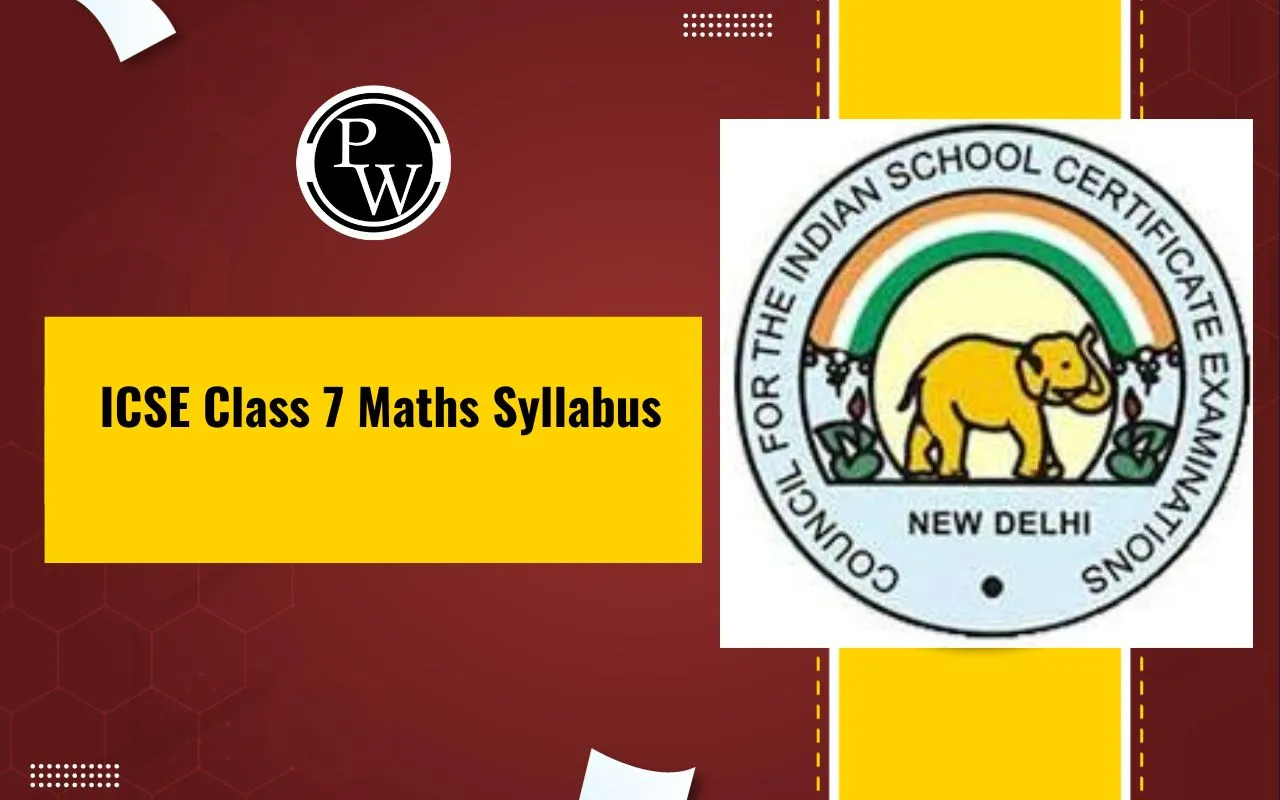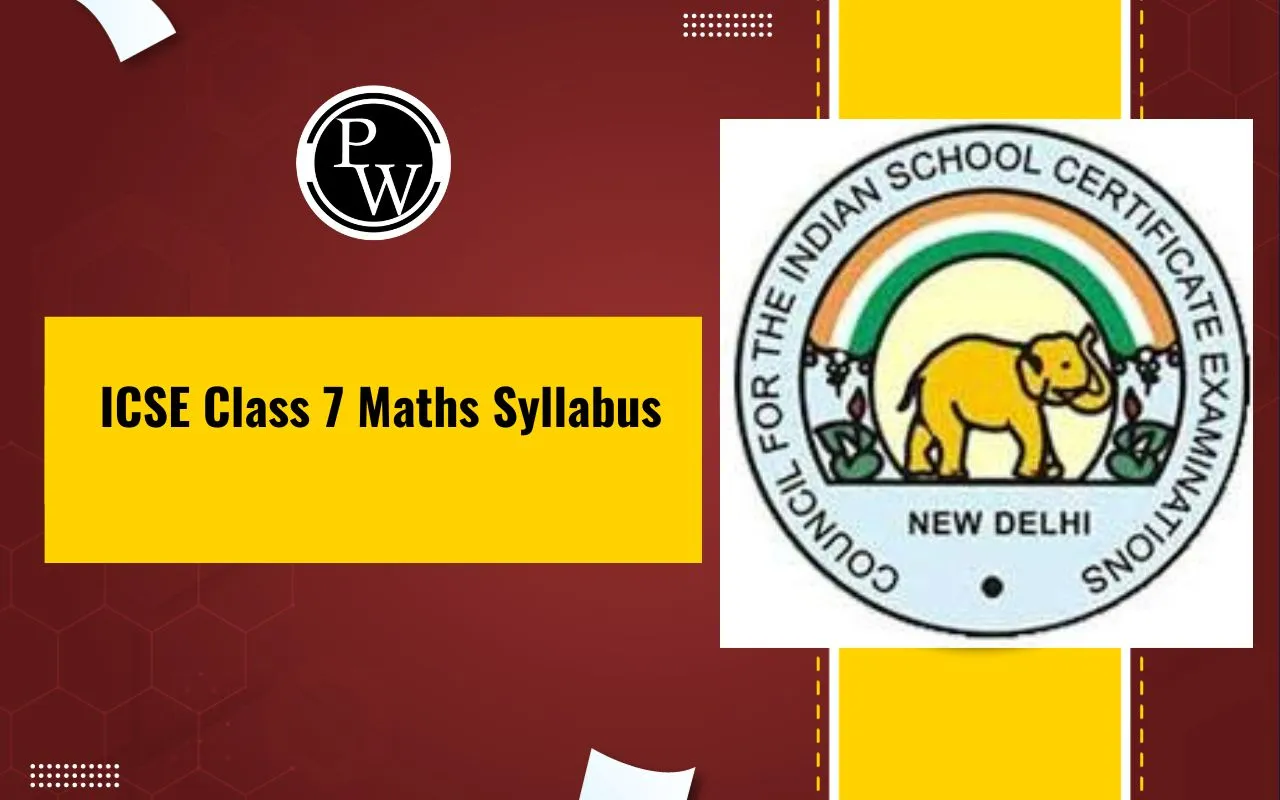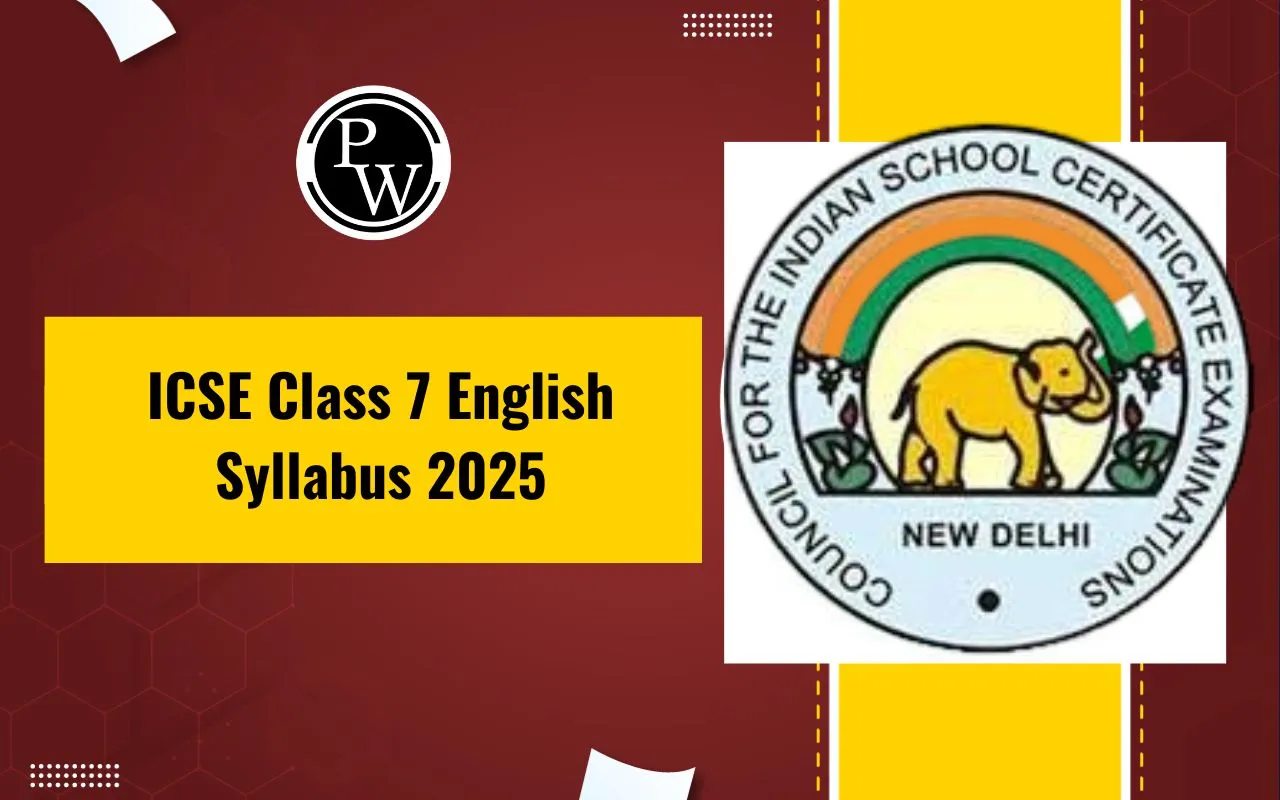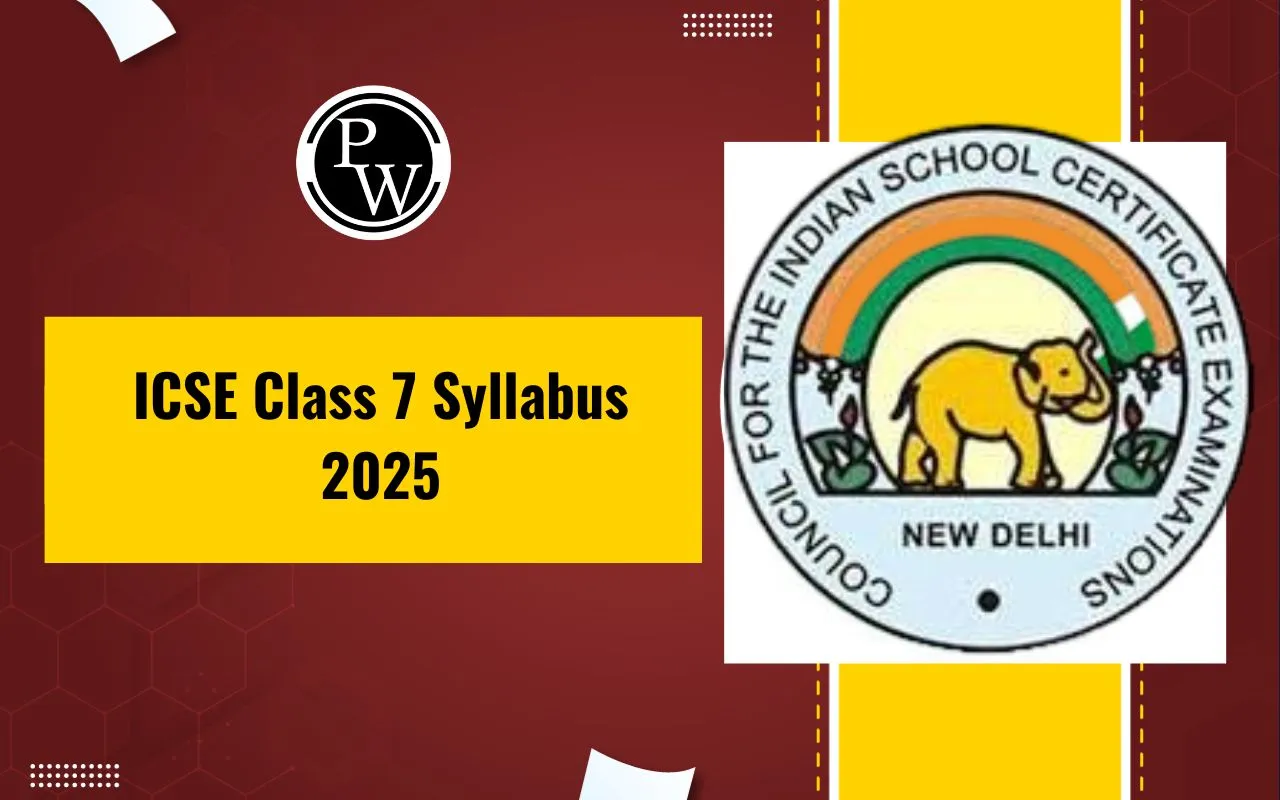

ICSE Class 7 Maths syllabus focuses on developing a strong foundation in mathematical reasoning, logical thinking, and problem-solving skills. It is designed to strengthen students’ understanding of core mathematical ideas and prepare them for more advanced concepts in higher classes.
The exam is usually a written paper that includes multiple-choice questions, short-answer questions, and long-answer questions. It tests both the understanding and practical application of mathematical skills.
To perform well in the exam, students should regularly practice problems, revise formulas, and solve previous years’ question papers. Building a clear understanding of concepts and practicing them consistently can help boost accuracy and speed in problem-solving.
ICSE Class 7 Maths Syllabus 2025–26
The ICSE Class 7 Mathematics syllabus for the academic year 2025–26 includes a wide range of topics that expand upon the foundational knowledge learned in previous classes. It focuses on building strong concepts in areas like Integers, Rational Numbers, Algebra, Geometry, Mensuration, and Data Handling. The syllabus is designed to improve problem-solving skills, logical reasoning, and mathematical thinking.
Below is the detailed chapter-wise list of topics covered in the ICSE Class 7 Maths syllabus 2025–26:
|
ICSE Class 7 Maths Syllabus 2025–26 |
|
|
Chapter Number |
Chapter Name |
|
1 |
Integers |
|
2 |
Rational Numbers |
|
3 |
Fractions |
|
4 |
Decimals / Decimal Fractions |
|
5 |
Exponents |
|
6 |
Set Concepts |
|
7 |
Ratio & Proportion |
|
8 |
Unitary Method |
|
9 |
Percent and Percentage |
|
10 |
Profit, Loss and Discount |
|
11 |
Simple Interest |
|
12 |
Speed, Time and Distance |
|
13 |
Fundamental Concepts |
|
14 |
Simple Linear Equations |
|
15 |
Inequalities |
|
16 |
Lines and Angles |
|
17 |
Triangles |
|
18 |
Pythagoras Theorem |
|
19 |
Symmetry |
|
20 |
Recognition of Solids |
|
21 |
Congruency: Congruent Triangle |
|
22 |
Constructions |
|
23 |
Mensuration |
|
24 |
Data Handling |
|
25 |
Probability |
Detailed Overview of ICSE Class 7 Maths Syllabus 2025-26
Here's a detailed overview of each chapter in the ICSE Class 7 Maths syllabus for 2025-26:
1. Integers
-
Understanding positive and negative numbers
-
Number line representation
-
Operations: Addition, subtraction, multiplication, division
2. Rational Numbers
-
Definition and properties
-
Representation on the number line
-
Comparison and basic operations
3. Fractions
-
Types of fractions: proper, improper, mixed
-
Simplification and conversion
-
Addition, subtraction, multiplication, and division of fractions
4. Decimals / Decimal Fractions
-
Place value and number operations
-
Conversion between decimals and fractions
-
Application in real-life word problems
5. Exponents
-
Laws of exponents
-
Expressing large numbers using powers
-
Scientific notation (introduction)
6. Set Concepts
-
Definition and representation of sets
-
Types of sets: finite, infinite, equal, empty
-
Venn diagrams and basic operation
7. Ratio and Proportion
-
Understanding ratios
-
Proportions and cross multiplication
-
Applications in daily life (scaling, recipes, etc.)
8. Unitary Method
-
Finding value of one unit
-
Solving problems based on cost, distance, and quantity
9. Percent and Percentage
-
Conversion between fractions, decimals, and percentages
-
Finding percentage increase or decrease
-
Real-life applications: marks, discounts, profit, etc.
10. Profit, Loss and Discount
-
Basic formulas for profit/loss
-
Discount and marked price
-
Solving word problems based on transactions
11. Simple Interest
-
Formula: SI = (P × R × T) / 100
-
Calculating interest, amount, rate, or time
-
Word problems involving banks and loans
12. Speed, Time and Distance
-
Basic formula: Speed = Distance ÷ Time
-
Units and conversions
-
Solving journey-based word problems
13. Fundamental Concepts
-
Properties of numbers and operations
-
Estimation and approximation
-
Logical reasoning
14. Simple Linear Equations
-
Forming and solving one-variable equations
-
Applications in real-life situations
-
Use of transposition and balancing methods
15. Inequalities
-
Understanding inequality signs (<, >, ≤, ≥)
-
Solving and representing inequalities
-
Comparing expressions
16. Lines and Angles
-
Types of angles (acute, obtuse, right, straight)
-
Pairs of angles (complementary, supplementary)
-
Properties of parallel lines and transversals
17. Triangles
-
Types of triangles (by sides and angles)
-
Properties and classification
-
Angle sum property
18. Pythagoras Theorem
-
Statement and proof (conceptual understanding)
-
Applying the theorem in right-angled triangles
19. Symmetry
-
Lines of symmetry in 2D shapes
-
Rotational symmetry
-
Identifying symmetrical figures
20. Recognition of Solids
-
3D shapes: cube, cuboid, cylinder, sphere, cone
-
Faces, edges, and vertices
-
Drawing and understanding nets
21. Congruency: Congruent Triangles
-
Meaning of congruence
-
Criteria: SSS, SAS, ASA, RHS
-
Simple proofs and applications
22. Constructions
-
Using a compass and ruler
-
Constructing angles, bisectors, and perpendiculars
-
Drawing triangles with given measurements
23. Mensuration
-
Perimeter and area of squares, rectangles, triangles, circles
-
Surface area and volume of solids (cuboid, cube)
-
Real-life applications
24. Data Handling
-
Collecting and organizing data
-
Drawing bar graphs, pictographs
-
Interpreting data and finding mean, median, mode
25. Probability
-
Understanding chance and likelihood
-
Simple experiments (tossing a coin, rolling a die)
-
Basic concept of outcomes and probability value
ICSE Class 7 Maths Syllabus 2025–26 PDF Download
Students can download the ICSE Class 7 Maths Syllabus for the academic year 2025–26 in PDF format for easy access and exam preparation. The syllabus includes a detailed list of all the chapters and topics that will be covered throughout the year.
This PDF is a helpful guide for both students and parents, making it easier to plan studies and track progress. It ensures that students stay focused on important concepts and practice the right types of questions.
ICSE Class 7 English Syllabus 2025
Study without using the internet
Benefits of Using the ICSE Class 7 Maths Syllabus
- The syllabus gives students a clear idea of what to learn and in what order. This makes it easier to follow lessons, track progress, and avoid confusion during revision.
- Each topic is included with a purpose—to introduce new ideas while reinforcing earlier knowledge. This ensures that students gradually build confidence in handling more complex problems.
- With chapters on algebra, geometry, and mensuration, the syllabus encourages logical reasoning and analytical thinking through problem-based learning.
- Many chapters like profit and loss, simple interest, speed-time-distance, and unitary method are connected to daily life, helping students understand the practical use of maths.
- Since the syllabus closely follows the exam pattern, students can prepare with clarity. It also helps in identifying important topics for solving past year question papers and mock tests.
- The structured approach of the Class 7 syllabus ensures students are well-prepared for Class 8 and beyond, especially in topics like algebra, equations, and probability.
ICSE Class 7 Maths Syllabus 2025 FAQs
Who designs the ICSE Class 7 Maths syllabus?
What are the main topics covered in the Class 7 Maths syllabus?
Is there any change in the ICSE Class 7 Maths syllabus for 2025?
How many chapters are there in ICSE Class 7 Maths?






